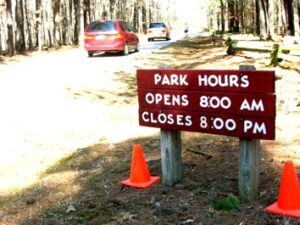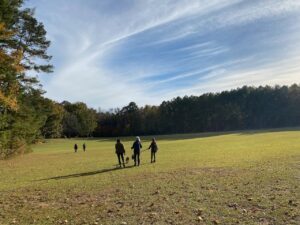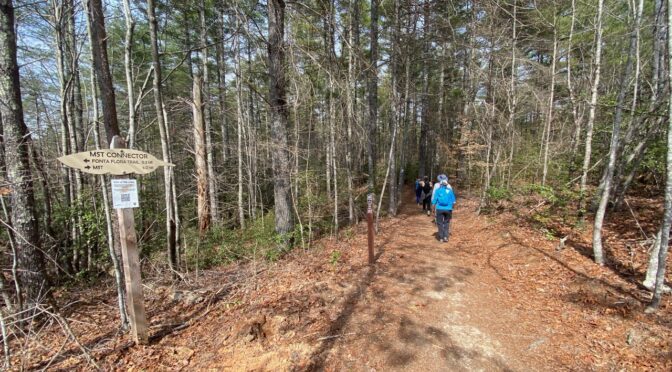It’s always been a goal to hike the trails less traveled. It’s a goal we’ve embraced with extra gusto over the past two years.
Quick recap: hiking was pretty popular prior to March 2020, it became the go-to source of not only outdoor recreation, but recreation of any kind after March 2020, it being deemed the only safe form of recreation in the face of a global pandemic. While hiking no longer bears that mantel, scads of folks who discovered the joy of hiking over the past two years aren’t going away. And the beginning of spring is when you really begin to notice the increased number of hikers on the the trail.

So, how to find a bit of the tranquility you seek in the woods? We share our thoughts on the subject, thoughts we’ve shared before over the past two years, thoughts we will share again, because the number of hikers out there isn’t going down soon.
- Hike early. Most N.C. State Parks open at 8 a.m. — a good time to go, especially on spring weekends with near-perfect weather. The morning chill — in the Triangle, it will be in the upper 40s Saturday morning, upper 30s Sunday morning— which should keep the numbers down at the trailhead. Sunday morning until noon-1 p.m. is typically a good time to be out, anyway.
- Hike late. State Parks are now open until 8 or 9, municipal and county parks, and nature preserves typically go dawn to dusk. (That’s open to some interpretation, but today, with twilight officially ending at 8:01 p.m., you should be safe hanging out until 8.) Take advantage of these later hours to get out. Remember to take a headlamp or flashlight. In fact, on a nice Sunday or Saturday, crowds generally begin to thin noticeably around 4 or 4:30 p.m.
- Avoid the main trailheads. Find the more remote trail access points for where you’d like to hike. In particular, look for trailheads that don’t:
- Have paved parking
- Begin from a visitor center
- Have restrooms
- Have an address
- Have access via a paved road. Especially attractive are trailheads off gravel roads. To find them, study the trail map, study Google maps, call the ranger’s office and ask about secondary and neighborhood entrances. You can find them.
- Avoid the main trails. Start from a more remote trailhead and you’ll be on a trail that likely doesn’t get much foot traffic — initially, at least. A lot of these trails connect with more popular trails eventually, often at spots that have fewer hikers. Also: remember that most “popular” trails are popular because they originate from an easy access point.
-

Medoc Mountain, just an hour northeast of Raleigh Avoid parks near urban areas. At the start of the pandemic on North Carolina, 12 state parks kept their trails open while the other 29 had to close. Why? Because they were in more remote locations, which doesn’t mean they’re a day’s drive away. For instance, one of the least visited state parks in North Carolina is just over an hour’s drive from Raleigh. Check out this map of North Carolina State Parks to see what’s near you, but not near a populated area.
In short, the better the weekend weather forecast, the more you’ll need to pay attention to ferreting out the trails less traveled. It’s a worthwhile investment of your time.
* * *
Ferreting out less-frequented trails, II

Finding those less-popular trails, those stealth trailheads, those spots that elude the masses, isn’t hard, but it doesn’t hurt to have a few extra insights into the topic. Our “Explore Your Neighborhood” guide can help you do just that. Written at the start of the pandemic, it was intended as a way to find hidden adventure gems close to home. But the tips that help you do just that also apply to helping you identify stealth spots at large. Learn more and check it out, here.
